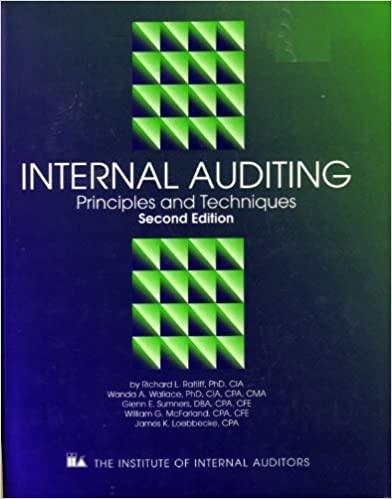Answered step by step
Verified Expert Solution
Question
1 Approved Answer
Page 227 ^^ =================================================================================================== Page 228 ^^ WILL RATE, thank you! No more information is needed to answer this question. The page numbers are just


Page 227 ^^
===================================================================================================


Page 228 ^^
WILL RATE, thank you!
No more information is needed to answer this question. The page numbers are just for reference. not needed for the problem.
Zorba Company, a U.S. based producer of specialty olive oil, sells 500 cases of olive oil to a foreign customer. The total selling price is 50,000 crowns. Relevant exchange rates are as follows: Zorba Company has an incremental borrowing rate of 12 percent (1 percent per month). The present value factor for one month is 0.9901 . The company closes the books and prepares financial statements on December 31. A. Assume the olive oil was sold on December 1, Year 1 and payment was received on January 31, Year 2. There was no attempt to hedge the foreign exchange risk. Prepare all journal entries to account for the sale. B. Assume the olive oil was sold on December 1, Year 1 and payment was received on January 31, Year 2. On December 1, Year 1, Zorba entered into a two-month forward contract to sell 50,000 crowns. The forward contract is properly designated as a fair value hedge of a foreign currency receivable. Prepare all journal entries to account for the sale and the foreign currency forward contract. (Hint: see pages 227-228) 3/1/Y2 Foreign Exchange Loss Accounts Receivable (e) To adjust the value of the euro receivable to the new spot rate of $1.48 and record a foreign exchange loss resulting from the depreciation of the euro since December 31. Forward Contract Gain on Forward Contract To adjust the carrying value of the forward contract to its current fair value of $5,000 and record a forward contract gain for the change in the fair value since December 31 . Foreign Currency (e) Accounts Receivable (e) To record receipt of 1,000,000 from the Spanish customer as an asset at the spot rate of $1.48 (Step 3 in Exhibit 6.4). Cash Foreign Currency (e) Forward Contract To record settlement of the forward contract, that is, record receipt of $1,485,000 in exchange for delivery of 1,000,000 and remove the forward contract from the accounts (Steps 4 and 5 in Exhibit 6.4). The impact on Year 2 net income is as follows: 12/31/Y1 Accounts Receivable () Foreign Exchange Gain To adjust the value of the euro receivable to the new spot rate of $1.51 and record a foreign exchange gain resulting from the appreciation of the euro since December 1. Loss on Forward Contract Forward Contract To record the forward contract as a liability at its fair value of $10,783 and record a forward contract loss for the change in the fair value of the forward contract since December 1 . The impact on Year 1 net income is: The effect on the December 31 , Year 1, balance sheet is: The net benefit from having entered into the for ward contract is $5,000. Eximco has a cash inflow of $1,485,000 rather Page 227 than the $1,480,000 that would have been received without a forward contract. This "gain" is reflected in net income as the difference between the net Gain on Forward Contract and the cumulative Discount Expense ($20,000$15,000=$5,000) recognized over the two periods. Effective Interest versus Straight-Line Methods Use of the effective interest method results in allocation of the forward contract discount of $5,017 at the end of the first month and $9,983 at the end of the next two months. Straight-line allocation on a monthly basis of the $15,000 discount would result in a reasonable approximation of these amounts: 12/31/Y13/1/Y2$15,00031=$5,000$15,00032=$10,000 Determining the effective interest rate is complex, and no conceptual insights are gained by its use. For the remainder of this chapter, we use straight-line allocation of forward contract discounts and premiums, as is allowed by the FASB. The important thing to keep in mind in this example is that, with a cash flow hedge, an expense equal to the original forward contract discount ( $15,000 in this example) is recognized in net income over the life of the contract. What if the forward rate on December 1, Year 1, had been $1.506 (i.e., the euro was selling at a premium in the forward market)? In that case, Eximco would receive $6,000 more through the for ward sale of euros ($1,506,000) than if the euros had been received and converted into dollars at the date of sale ($1,500,000). The forward contract premium would be allocated, following straightline allocation, as an increase in net income at the rate of $2,000 per month: $2,000 at 12/31/Y1 and $4,000 at 3/1/Y2Step by Step Solution
There are 3 Steps involved in it
Step: 1

Get Instant Access to Expert-Tailored Solutions
See step-by-step solutions with expert insights and AI powered tools for academic success
Step: 2

Step: 3

Ace Your Homework with AI
Get the answers you need in no time with our AI-driven, step-by-step assistance
Get Started


